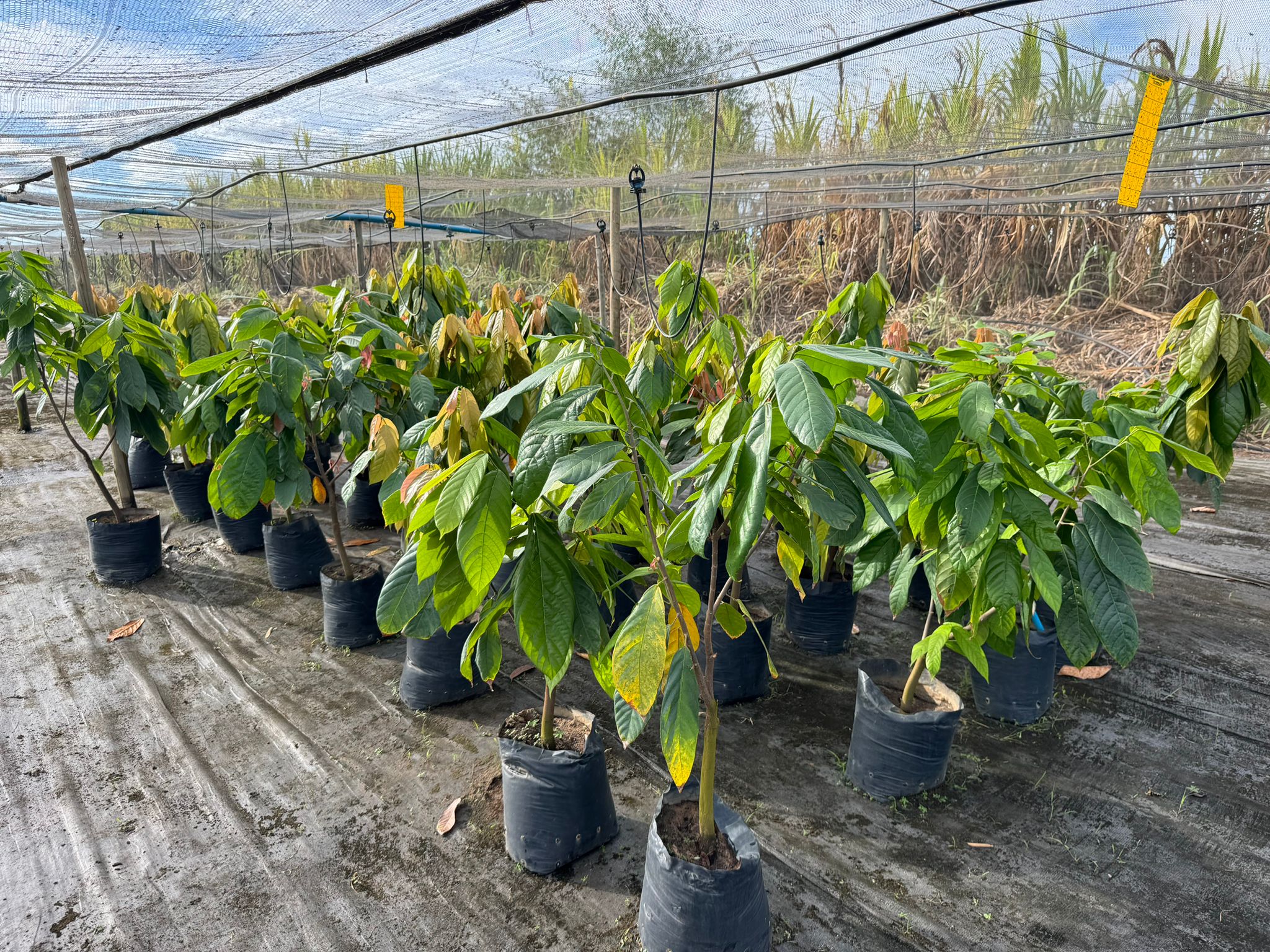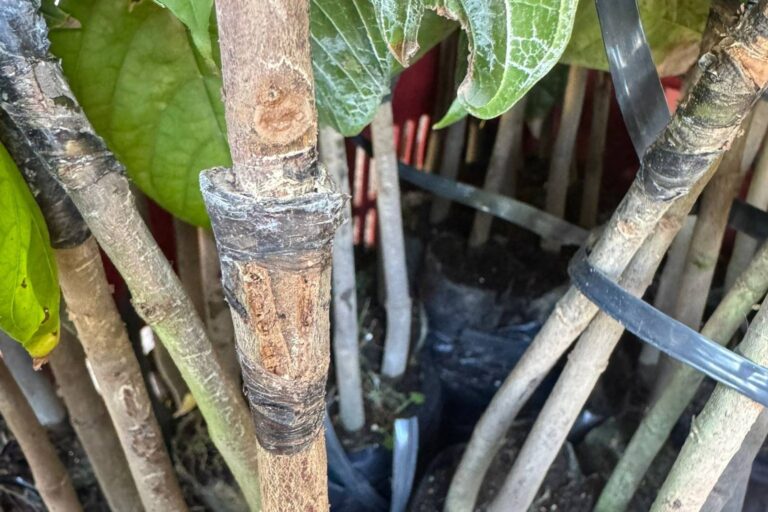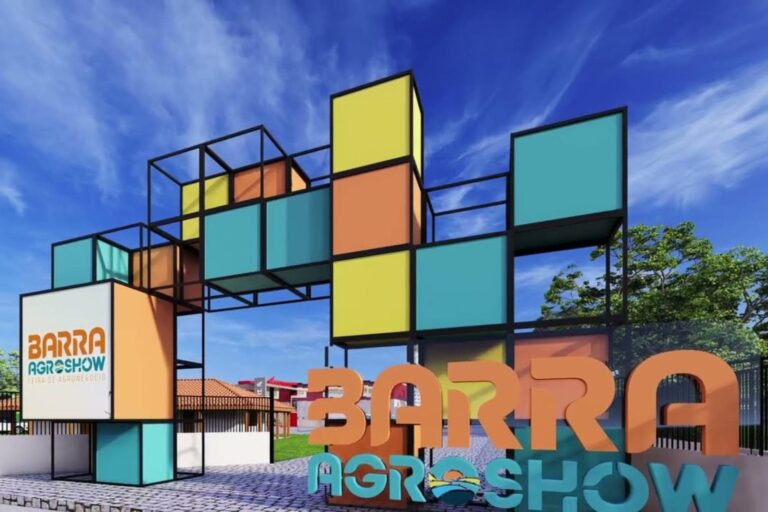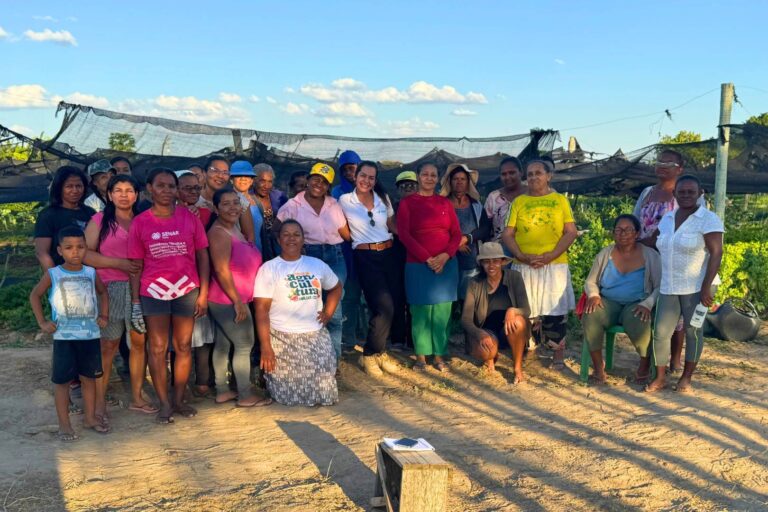In the heart of Brazil’s semi-arid landscape, an unexpected oasis of green thrives. Our cacao farm at Peirot is a hub of activity where sustainability meets innovation, and where the future of chocolate begins. As the foundation of our commitment to sustainable farming, our net house more than just a kindergarten for cacao trees—it’s a living laboratory where resilience, flavor, and eco-friendly practices converge.
A Net House for Innovation: Nurturing the Future of Cacao
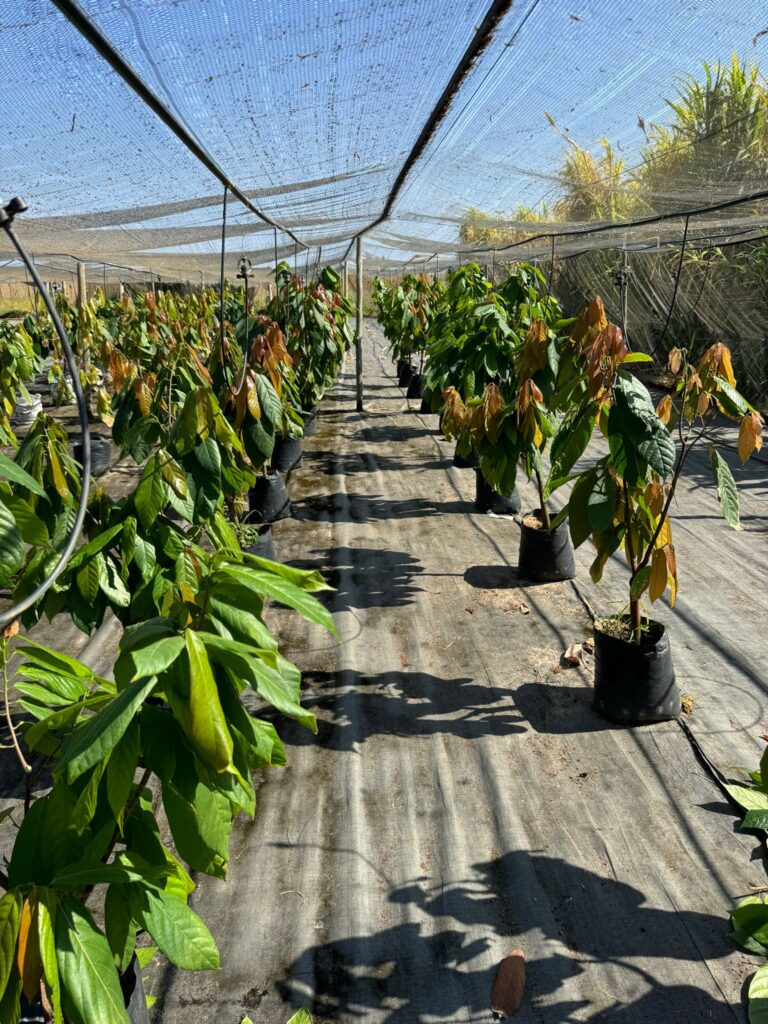
Our cacao net house stands as a testament to Peirot’s forward-thinking approach to agriculture. The net house’s primary purpose is to cultivate strong, resilient cacao plants that can thrive in the challenging semi-arid environment of our region.
This is no small feat. Cacao trees traditionally flourish in tropical rainforest conditions, with high humidity and regular rainfall. At Peirot, however, we’re pioneering methods to adapt cacao to a drier climate. This work is crucial not only for the success of our operations but also for the future of cacao farming in the face of climate change.
Our net house serves as the first line of defense against the unpredictable challenges of agriculture. By starting with healthy, robust seedlings, we set the stage for a more sustainable and productive cacao farm. Each plant that leaves our net house carries with it the potential for years of high-quality cacao production, making this facility the true heart of Peirot’s operations.
Selecting Cacao Varieties: A Symphony of Flavors and Resilience
One of the most critical aspects of our work is the careful selection of cacao varieties. This process is a delicate balance of art and science, where considerations of flavor profile, disease resistance, and adaptability to local conditions all play crucial roles.
Our team of agronomists and flavor experts work tirelessly to identify and cultivate cacao varieties that not only survive but thrive in the semi-arid Brazilian climate. We focus on varieties known for their resilience to drought and heat, such as the CCN-51 hybrid, known for its high yield and disease resistance. However, we also prioritize fine flavor varieties like Criollo and Trinitario, prized for their complex taste profiles.
The importance of diversity in cacao crops cannot be overstated. By cultivating a range of varieties, we ensure a more stable harvest year after year. This diversity acts as a natural insurance policy against diseases that might devastate a monoculture crop. It also allows us to produce a range of chocolate flavors, from fruity and floral notes to deep, rich cocoa profiles.
Moreover, our variety selection process contributes to the preservation of cacao biodiversity. By cultivating and promoting a wide range of cacao types, including rare and heritage varieties, we at Peirot play a role in protecting the genetic diversity of cacao—a crucial factor in the long-term sustainability of chocolate production worldwide.
Experimentation with New Varieties: Pushing the Boundaries of Cacao Cultivation
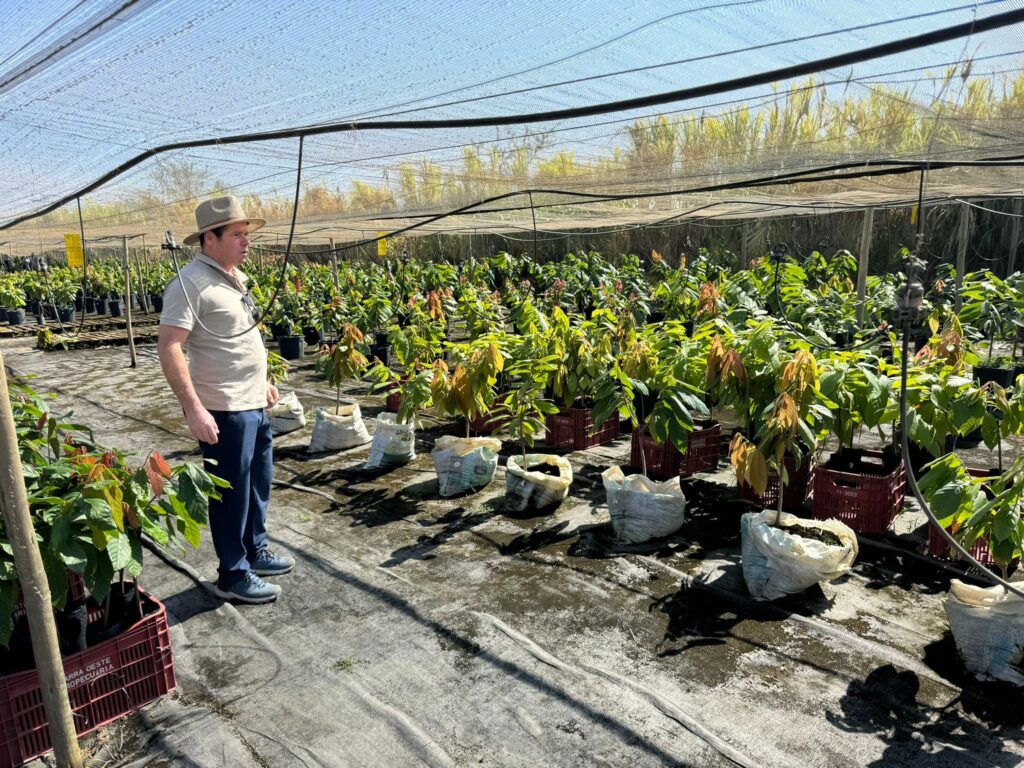
Our farm at Peirot is not just a production facility—it’s a hub of continuous experimentation and improvement. Here, we conduct ongoing trials to identify which cacao varieties perform best under different conditions, from varying soil types to fluctuating weather patterns.
Our net house serves as a testing ground for various growing conditions. Different plots within the facility simulate various microclimates and soil conditions found across our farmland. This allows our team to fine-tune growing practices for each variety, optimizing factors like irrigation, shade, and fertilization to achieve the best possible results.
These experiments are not conducted in isolation. We maintain strong partnerships with agricultural research institutions and universities, both in Brazil and internationally. These collaborations ensure that Peirot stays at the forefront of cacao research and can quickly implement new findings to improve our practices.
Farming Techniques and Sustainable Practices: Nurturing Plants and Planet
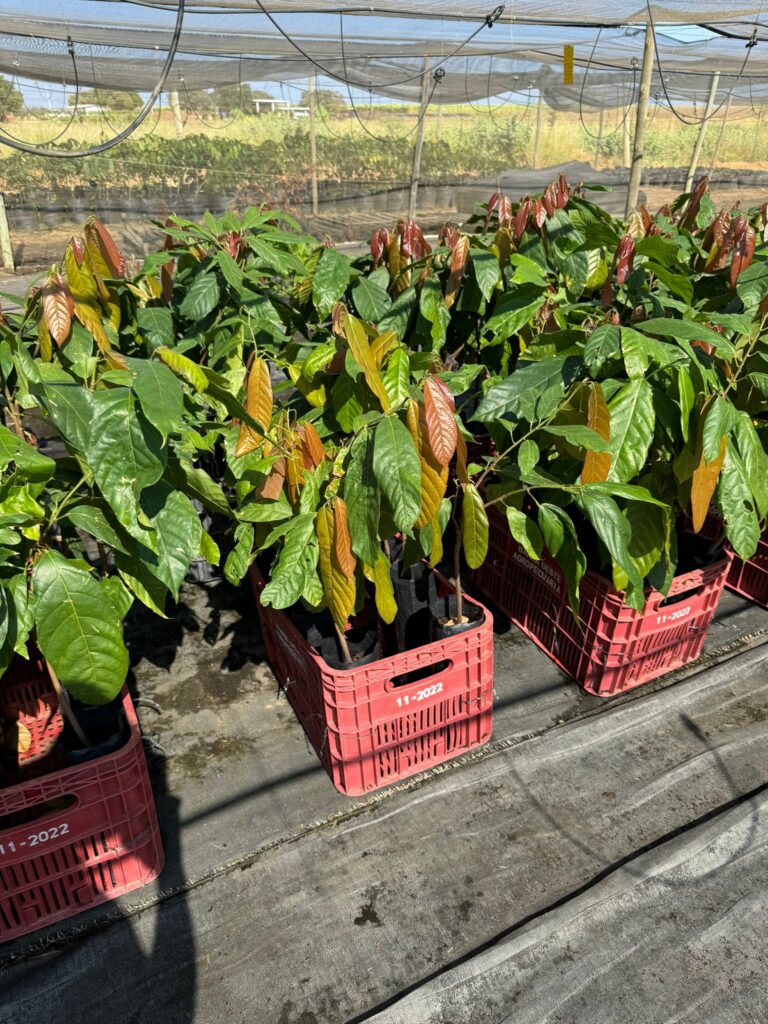
At Peirot, sustainability is not just a buzzword—it’s a core principle that guides every aspect of our operations, including the net house. The techniques we use to nurture young cacao plants are carefully chosen to minimize environmental impact while maximizing plant health and vigor.
One of the most innovative practices we employ on our farm is the use of compost derived from coconut husks. This organic material, a byproduct of coconut production, provides an excellent growing medium for young cacao plants. Rich in nutrients and with excellent water retention properties, coconut husk compost reduces the need for chemical fertilizers while improving soil structure.
Water conservation is another key focus area in our nursery. Given the semi-arid climate, efficient use of water is crucial. We’ve implemented a state-of-the-art drip irrigation system that delivers precisely the right amount of water to each plant, minimizing waste. Additionally, we capture and recycle rainwater, further reducing our environmental footprint.
Pest management in our nursery follows organic and integrated pest management (IPM) principles. Rather than relying on chemical pesticides, we use a combination of biological controls, such as beneficial insects, and cultural practices like proper spacing and sanitation to keep pests at bay. When intervention is necessary, botanical pesticides derived from neem and other plants are our first line of defense.
Our farm also serves as a testing ground for various organic fertilizers. We experiment with different combinations of composted plant matter, animal manure, and mineral supplements to develop fertilizer blends that provide optimal nutrition for cacao plants while improving soil health.
Energy use in our farm is another area where we prioritize sustainability. Solar panels provide much of the electricity needed for irrigation pumps and other equipment, reducing our reliance on the grid and lowering carbon emissions.
These sustainable practices not only benefit the environment but also contribute to the quality of the cacao we produce. By nurturing plants in a healthy, chemical-free environment from the start, we ensure that our cacao trees are robust and capable of producing high-quality beans throughout their productive lives.
Supporting Local Communities and Knowledge Sharing: Growing More Than Just Cacao
Our commitment to sustainability extends beyond environmental concerns to encompass social responsibility as well.
Recognizing that sustainable cacao production requires a holistic approach, we actively collaborate with local farmers and agricultural experts. We attend regular workshops and training sessions, where small and large-scale farmers from the surrounding area share insights on sustainable cacao cultivation techniques. These sessions cover topics ranging from soil management and water conservation to pest control and post-harvest processing.
By sharing our knowledge and resources, we help to elevate the entire local cacao industry. This not only improves the livelihoods of neighboring farmers but also ensures a more stable and sustainable supply chain for Peirot.
Our farm also serves as a living classroom for agricultural students from nearby universities. Through internship programs and research partnerships, we provide hands-on experience in sustainable agriculture practices, helping to nurture the next generation of cacao farmers and agricultural scientists.
Conclusion: Planting Seeds for a Sustainable Future
Our cacao farm at Peirot is much more than a facility for growing young cacao trees. It is a microcosm of our vision for the future of chocolate—one where sustainability, innovation, and community come together to produce exceptional cacao in harmony with both people and planet.
From the careful selection of resilient and flavorful cacao varieties to the implementation of cutting-edge sustainable practices, every aspect of our nursery’s operations is designed to push the boundaries of what’s possible in cacao cultivation. By experimenting with new varieties, refining eco-friendly growing techniques, and sharing knowledge with the wider community, we at Peirot are planting the seeds for a more sustainable and equitable cacao industry.
As climate change continues to pose challenges for agriculture worldwide, the work we’re doing at our farm takes on even greater significance. The lessons we’re learning here—about adapting cacao to drier climates, increasing resilience through biodiversity, and minimizing environmental impact—could prove crucial for the future of chocolate production globally.
In the end, each cacao seedling that leaves our net house carries with it more than just the potential for delicious chocolate. It represents our commitment to innovation, sustainability, and community—a small but significant step towards a better, more sustainable future for all. As these trees grow and bear fruit, they stand as living proof that with care, creativity, and commitment, it’s possible to produce world-class cacao while nurturing both people and planet.

